
views
X
Research source
Most of these plastics are dumped into our landfills after a single use, with around 10 million tons dumped into the ocean.[2]
X
Research source
The best way to stop this and protect our environment is to recycle. Making a difference can be as easy as recycling your plastic bottles and jugs. In this article, we’ll teach you how to recycle plastic bottles properly and show you where to bring them.
- Clean, dry, and remove any labels or packaging from your plastic bottles before recycling them.
- Toss your clean bottles into a designated recycling bin or container if they're stamped with the number 1 or 2.
- Sign up for a weekly recycling curbside program, or drop your recyclable goods off at a recycling center near you.
How to Recycle Plastic Bottles

Rinse the bottle and remove the cap and label. Empty the bottle if it contained water. For other liquids, fill the bottle partway with water, put the cap back on, shake it around a bit, and then empty the bottle. Then, ensure your bottle is ready to be recycled with similar plastic by removing any additional caps, labeling, or seals. The bottle doesn't need to be perfectly clean, but no residue should be inside. The material made to create bottle caps and labels can be different than the plastic of the bottles themselves. Most of the time, the cap and label can be left on the bottle; however, it’s always best to be safe. You can crush your plastic bottles to save space. Don't put your bottles or other recyclables in a bag (paper or plastic). Instead, put them directly into a recycling bin.
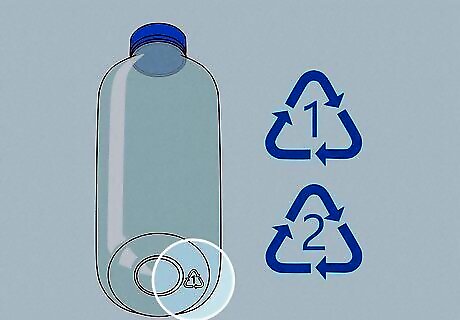
Recycle plastic bottles with the numbers 1 or 2 on the bottom. The number etched into the bottom of a plastic bottle or jug is the resin number, which tells you what kind of plastic the bottle is made of. Plastics with the number 1 or 2 are the easiest and most commonly recyclable, meaning they can likely be taken by any recycling company. Resin numbers go from 1 to 7, with 7 being the hardest plastic to recycle. If your bottle has a number other than 1 or 2, double-check that your recycling center or company is able to take them. They may have other preparation steps to ensure they’re recycled properly.
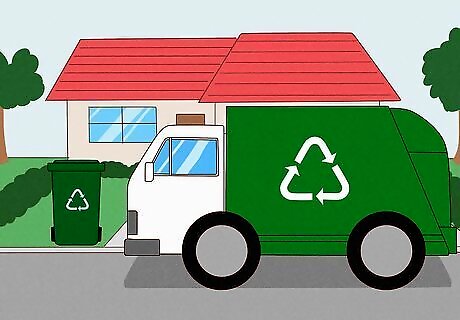
Use a curbside recycling service, if you can. In most communities, nearby recycling centers offer curbside pickup services. These services require you to fill a designated bin or color-coated trash can with recyclable materials. Then, on a designated day, the company will come by your house and pick it up—similarly to a regular trash service. Find out if your community has a curb-side recycling program by chatting with your neighbors or searching “recycling curb-side pick up near me” online. If you live in an apartment complex or dormitory, the building or campus will likely have a recycling bin you can dump your bottles in—so don’t hesitate to ask around!
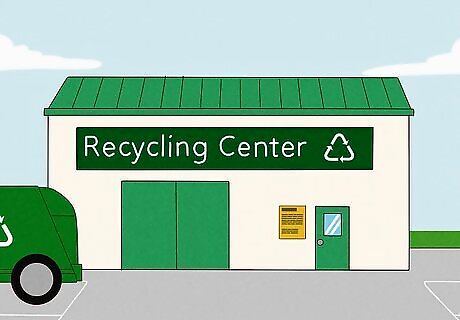
Drop your plastic bottles off at a recycling center as an alternative. If curb-side pickups don’t stop in your neighborhood, no problem! Look into where the nearest recycling center is located. Simply search “recycling center near me” online and find the closest one. Read through their guidelines or give them a quick call to learn if there are any rules you need to follow to recycle your bottles properly. Avoid dropping your plastic bottles off in a plastic bag as these can not be recycled the same way as plastic bottles. Instead, invest in a recycling bin to help you transport the items. Consider crushing your bottles if you have a lot of them to save space and make them easier to transport.
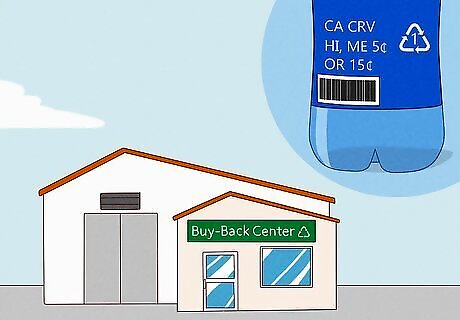
Take your plastic to a buy-back center if there's one in your area. Some states will pay you for your plastic bottles and/or jugs. Check your bottle for the label or stamp “CASH REFUND” or “CRV.” If your bottle has this label, you may be eligible for a small refund when turning your bottle into a recycling center. This system is called Bottle Billing. Bottle Bill states include California, Connecticut, Hawaii, Iowa, Maine, Massachusetts, Michigan, New York, Oregon, and Vermont. A price is typically listed by the “CASH REFUND” or “CRV” stamp. For instance, you might see an amount like 5¢ or 15¢. This determines how much money you’ll get back. Keep in mind that just because a certain state offers cash refunds for plastic bottles does not mean that the state's recycling center will take back every bottle, especially if they’re made of other materials or from a different state.
How are plastic bottles recycled?
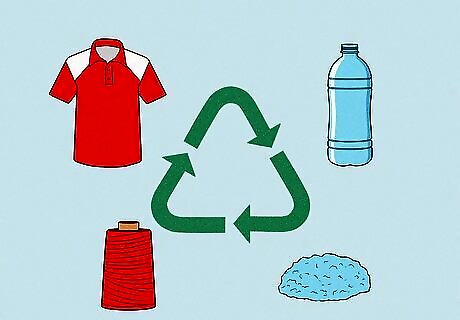
Plastic bottles are processed and turned into new items. After you send your plastic bottles off to a recycling center, they’re cleaned and sorted into like materials. The plastics are then baled or squashed together into transportable cubes or shredded into shavings. Shredded items can then be used to make other items. Baled plastics are shipped to plastic waste sites where they’re burned or possibly downcycled. Plastic bottles with a higher resin number are more likely to be baled because they’re more difficult to process or break down. Downcycling is when a material is remade into an item of lower quality. This cuts the loop of recycling as a downcycled item cannot be further recycled.
Why is it important to recycle?
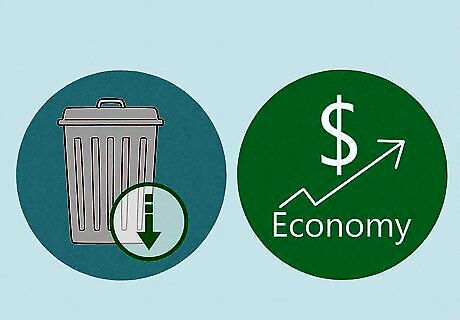
Recycling helps improve the environment and the economy. Tossing a clean plastic bottle into a blue bin might not seem like much, but this simple action can make a huge difference. When you recycle, you help conserve natural resources and energy, which in turn reduces the need to use other resources to make new products and minimizes waste. Along with this, recycling centers help boost the economy by offering community members jobs and reducing taxes. Environmentally, recycling saved 193 million metric tons of carbon dioxide in 2018, which helped in the effort to reduce climate change. Energetically, it’s estimated that recycling 10 plastic bottles saves enough energy to power a laptop for more than 25 hours. Economically, recycling and reuse activities provided over 681,000 jobs in the United States in 2020.


















Comments
0 comment